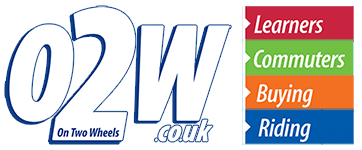A change of tack for our series, because sometimes we all ride outside of town.
Do you ever ride through the countryside? Even those of us using a bike for a 100% urban commute inevitably venture outside 30/40 limits. Aren’t rural roads tempting? Far less traffic, fewer traffic lights, roundabouts, pedestrians and higher speed limits. Most crashes occur in town, so rural roads must be less hazardous to ride, mustn’t they?
“The thing is” says motorcycle instructor Spirit Wright, “people think it’s safer to ride in the countryside, but the lanes and B roads are nearly as bad as inner city roads, for different reasons. There are deer and pheasants to avoid, and tractors own the roads”. Spirit runs Yeovil Motorcycle Training and he’s right. Although there are more collisions in towns, crashes on rural roads tend to be more serious, because speeds are higher, and they make up 70% of bike fatalities.
Also, riding through Britain’s beautiful countryside can be fantastic. There are traffic pockets, but generally it’s pretty free flowing, as are the bends. Add-in scenery, far horizons and teashops, and you’ve got plenty of reasons to ride rural roads, just because they’re fun to do.
Enjoy everything More Bikes by reading monthly newspaper, Read FREE Online.
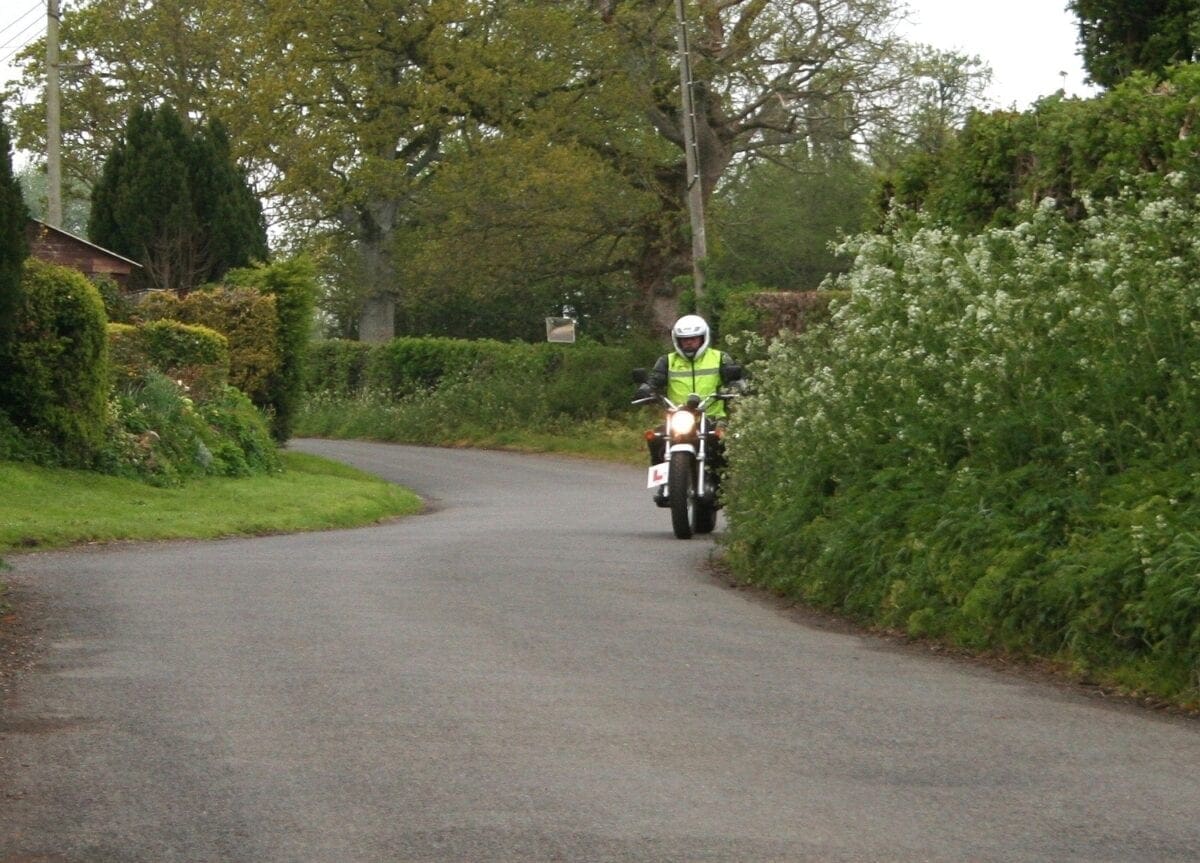
ROUND THE BEND
Rural roads have loads of bends – one of the best reasons for riding two wheels in the first place. Drive round a bend in a car, and there’s a mild pressure on you as the tiddly g-force does its thing. On a bike you’re a lot more involved, using your whole body (not just power-steered fingertips) to lean with the machine. This doesn’t mean getting your knee down; one of the joys of cornering is that it’s a great feeling at lower (and safer) speeds. Plus you feel part of what’s happening.
So what’s the best way to enjoy all of this? After his students have passed their CBT, Spirit Wright takes them out of town, and this is his advice: “There’s basically two ways around a corner; fastest and safest. Our method differs from police training and some of their advanced courses, in that we go for the safest. Our philosophy is slow in, fast out, and to always feel that you could have ridden it faster.’
‘On right-hand bends, pick your braking and change-down point. UK road signs are good, and I tell students to change down at the ‘SLOW’ sign and brake if needed. They should be just to the left of the middle of the lane, about three feet from the verge, and hold that line all the way round. This gives you better visibility round the bend, and traffic coming the other way can see you sooner. Being well away from the white line, you’ll be out of the way of anything big (like a tractor) coming the other way, so you won’t need to adjust position halfway round. At the apex of the bend, when you can see the way out, gradually accelerate. This settles the bike on its suspension slightly and increases grip.’ Get this approach right and this smooth transition from a closed throttle to firm acceleration is a joy.
Left-hand bends are more controversial. The wisdom of advanced riding is to ride close to the white line all way round, which does maximise visibility. This isn’t to be confused with the classic racing line, which cuts the corner, making it shallower and potentially faster, but making visibility at the apex as bad as it could be.
Spirit Wright’s advice is to go for neither. “There’s less visibility on a left-hand bend; as with the right-hander, we change down (braking if needed) at the SLOW sign, but stay in the lane centre. If you’re close to the verge, you’ve got very little visibility and you’re making the bend tighter than it needs to be. If you’re close to the white line, then you’re in danger of hitting something large (a truck or tractor) coming the other way”. In other words, ride in the lane centre and you sacrifice some visibility for a less vulnerable position.
Whichever direction the bend is heading, the simple rule ensuring a smooth passage is to look to where you want the bike to be, not just in front of the front wheel. It’s a weird fact about hand/brain/eye co-ordination, but it’s true. If you stare at the hedge, the ditch or the chevron sign as it approaches, you’ll most likely end up embedded it. Look further round the bend to the so-called vanishing point (the furthest point of tarmac you can see) and that’s where you’ll go. “I use this when teaching students how to wheel their bikes” says Spirit, “and it works. Peripheral vision takes care of everything else”.
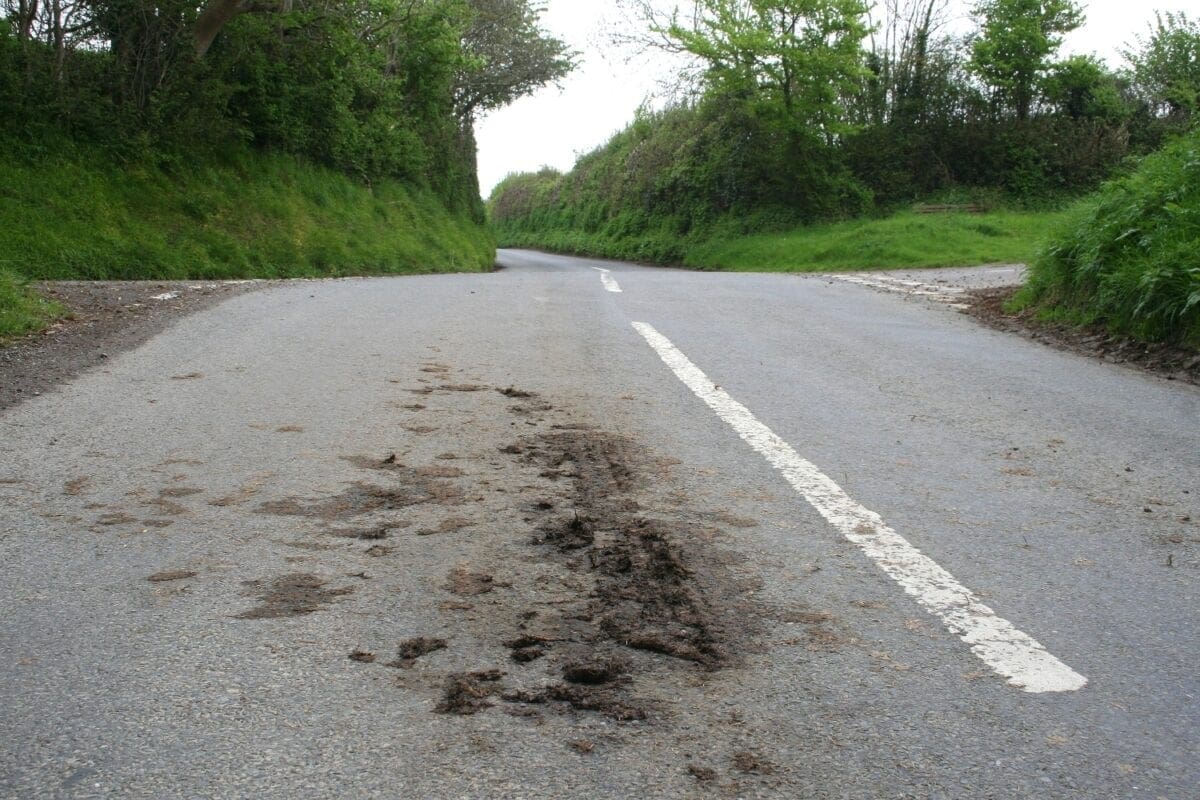
MUD ON ROAD
If you own a trail bike, the thought of mud may fill you with joy, but as a rule brown stuff doesn’t mix with tarmac and bikes. Tractors crawling out of quagmire fields inevitably leave mud behind. This is against the law (Highways Act 1980) if it endangers road users – I’ve not heard of any convictions, but it’s something the police could invoke if you came a cropper as a direct result.
So keep an eye open for ‘Mud on Road’ signs at gateways, farm entrances, and at night. It’s also weather dependent; this article’s photo session coincided with dry weather, so I didn’t see any mud, but after a wet spell, it’ll be back.
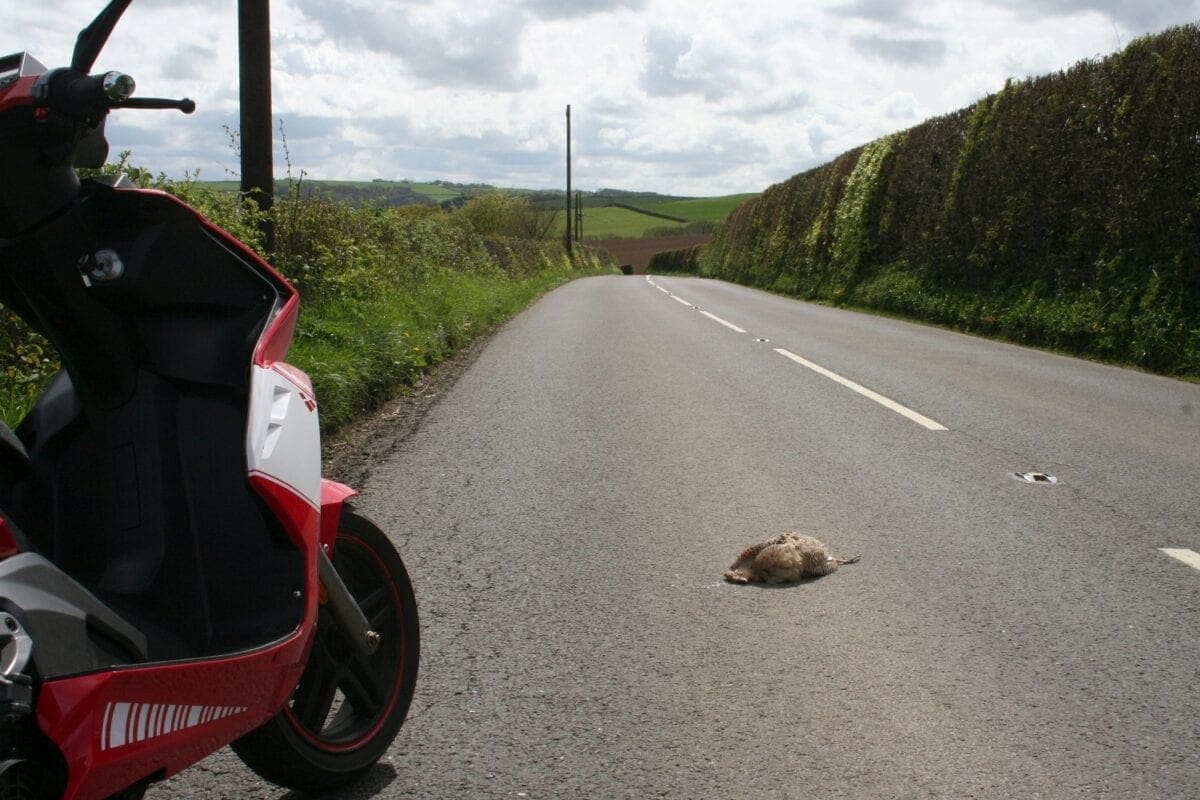
WILD LIFE
The countryside teems with wildlife, and inevitably some of it needs to cross roads. The consequences can be serious, depending on the creature’s size. Hit a deer and you’ll almost certainly come off. “The worst times are early morning and late afternoon” says Spirit, who in a previous life was a deer stalker so knows a bit about their habits. “If you do see one crossing, others are likely to follow. Take care passing anything giving them cover (woodland or high hedge). It’s mad to ride past woodland at night at 60mph, because deer appear suddenly”.
The smaller the creature, the less serious the consequences; pheasants are pretty solid; I hit one once – fortunately it glanced off the bike’s screen and disappeared, making a hell of a bang on its way. These birds are more hazardous than most, as they’ve been bred as dull-witted, slow-moving targets, for the benefit of poor shots with slow reactions. This also makes them easy targets for us, so beware.
Spirit adds: “Don’t swerve to avoid smaller animals like rabbits and squirrels; it sounds heartless, but it’s better to squish them than potentially cause an accident by swerving”.
Horses aren’t wild and loose (except on Dartmoor) but they’re big and heavy enough to do a lot of damage, so treat them with respect. Leave room when overtaking and to avoid spooking the horse, keep the noise down using a high-ish gear on a geared bike (trickier on a two-stroke auto, but cruising past rather than accelerating helps). Do this and horse riders usually respond with a smile and a wave – doesn’t do any harm to have allies on the road…
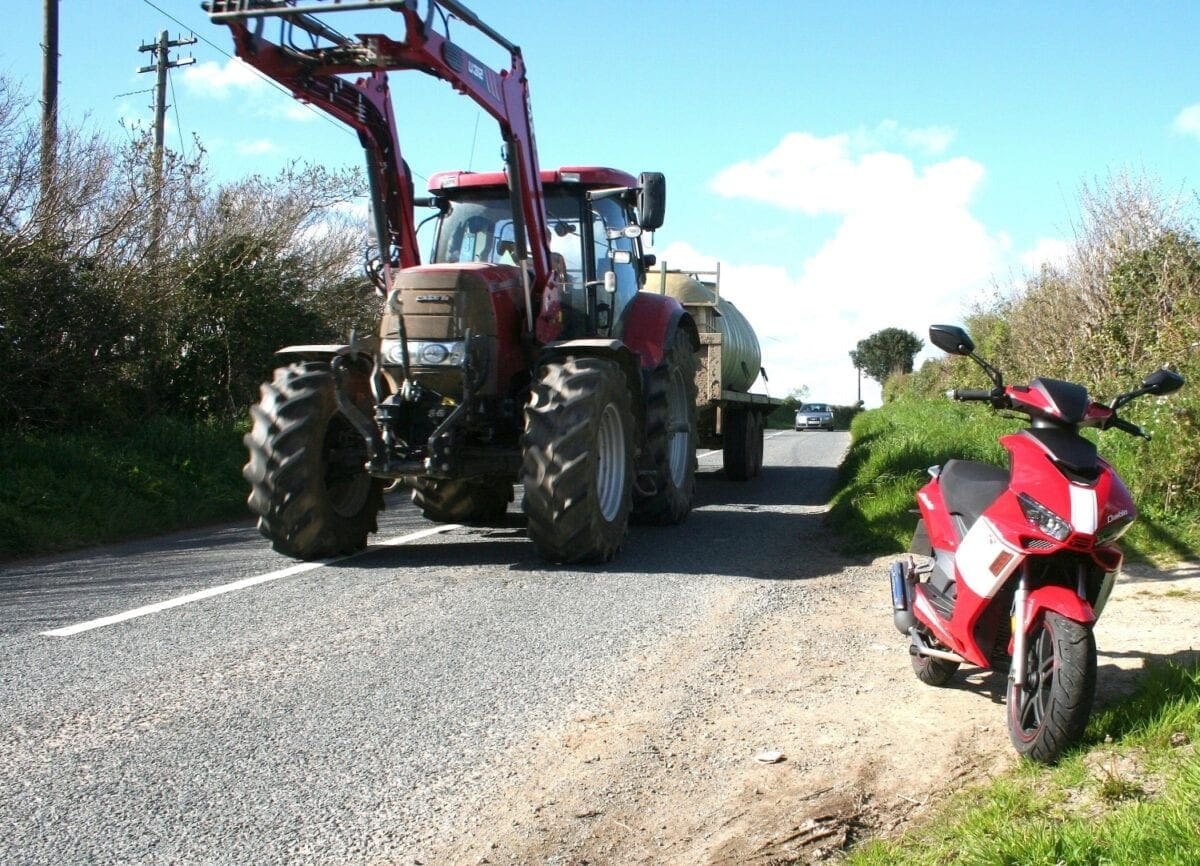
TRACTOR TED
Back in the day, farmers used little grey Fergies or a Fordson Major, scarcely bigger than a car and trundled along at 15mph. But now, the economics of farming seems to dictate monster tractors of 150hp-plus, which can charge along country roads.; that may not sound fast, but when one heads your way, hauling 10 tons of sugar beet, it seems pretty damn quick.
Tractors need space (especially towing a trailer) and can’t stop quickly. If there’s a white line, a big tractor will almost certainly be over it; if the road’s too narrow for a white line, slow down or stop to allow the tractor past. If there’s no trailer, the tractor may still have a massive 10-furrow plough mounted on the back, and these swing-out on bends. And when a tractor finally signals it’s turning into a field, don’t nip past. These beasts need time and space to make a tight turn. The same comments apply to horse boxes and lorries on a smaller scale. If they’re going inexplicably slowly, it’s probably because there’s a horse inside. So bide your time until you know it’s safe to overtake.
Yes, rural roads have hazards of their own, but they’re also great places to get out and ride. See you there.
Thanks to Spirit Wright of Yeovil Motorcycle Training
www.yeovilmotorcycletraining.com
(01935) 412860.
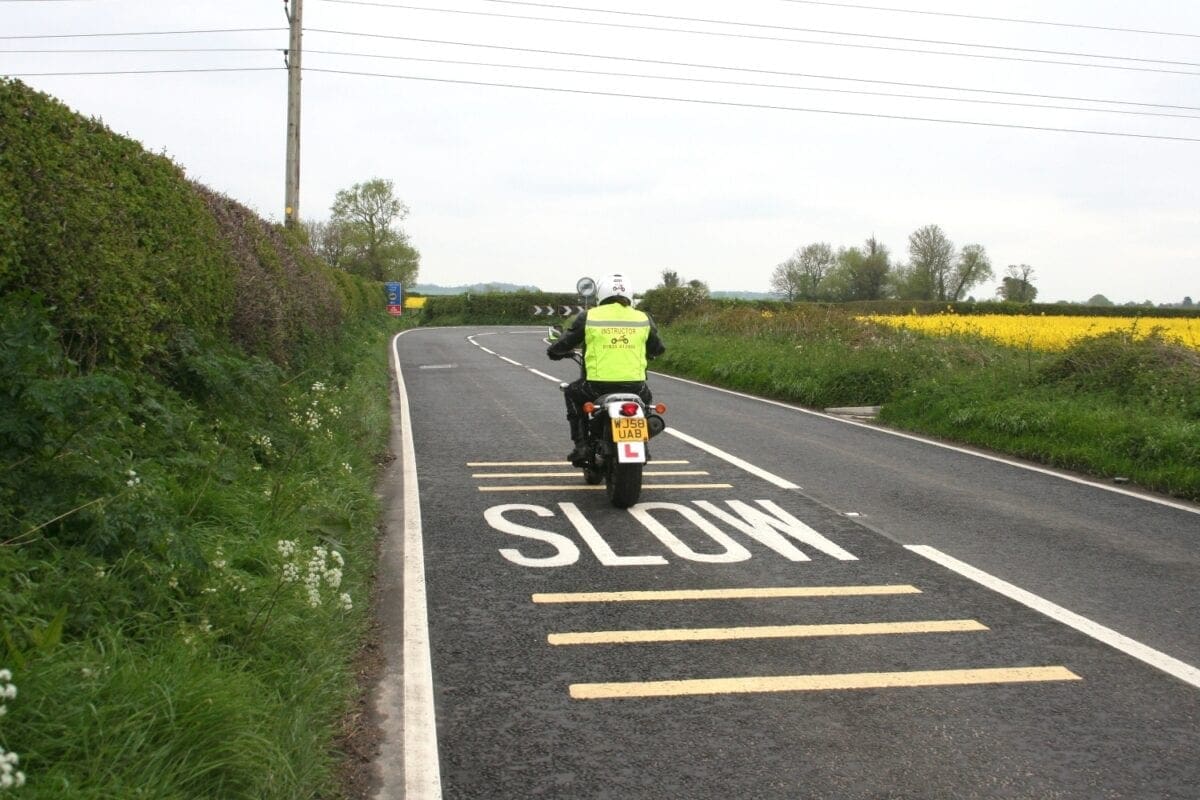
Advert
Enjoy everything More Bikes by reading the MoreBikes monthly newspaper. Click here to subscribe, or Read FREE Online.
